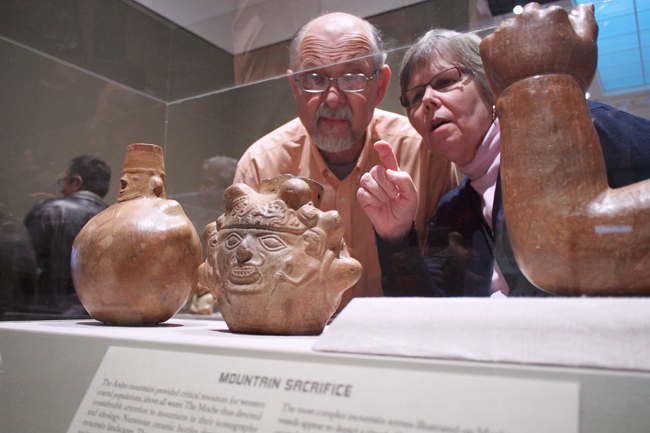For thousands of years, the art of ancient South American cultures remained shrouded in mystery — but now, a new exhibit at the Blanton Museum of Art provides a glimpse into the lifestyles of many ancient Andean groups.
The exhibit, “Between Mountains and Sea: Arts of the Ancient Andes,” premiered at the Blanton museum Saturday with a series of public tours. It features ceramics and textiles from a variety of pre-Incan cultures, such as the Paracas, Nazca and Moche.
Blanton museum docent Connie Shortes said the exhibit’s wide range of history and the perspective it provides into ancient cultures makes it distinctive.
“It covers the period before the Inca, which is probably the most commonly known era, so you see a lot of the origins that led up to that,” Shortes said. “Over 2,000 years of history.”
The works for the exhibit came from the University’s art and art history collection, which consists of ancient artifacts and historic objects from the Americas and Africa. The exhibit, featuring 80 works from the collection, focuses on the artistic development and traditions of pre-Incan cultures.
Art history professor Julia Guernsey said the pieces provide important clues to the behavior and rituals of people in the Americas.
“Their designs can be used to help us understand ancient religious beliefs, track shared cultural traditions and explore the range of artistic variation that existed in the ancient past,” Guernsey said.
History junior Alex Wendland said he enjoyed seeing different materials used in the construction of ancient art.
“I was amazed at how well the textiles were preserved,” Wendland said. “It’s a way to think about art that I hadn’t thought about before. I usually think about stone and metal being used in art, instead of fabric, so it was a cool approach.”
Shortes said many of the behaviors reflected in ancient Andean art, such as those of the Moche, remain intriguing because of their unconventional nature.
“The Moche were known for their ritual of human sacrifice,” Shortes said. “Massive graves have been found of people who have been sacrificed and chunked off of mountains. [There are] rituals that seem hard to understand, like human sacrifice, which is endlessly fascinating to us because we’re so far removed from it, but it’s part of human history.”













